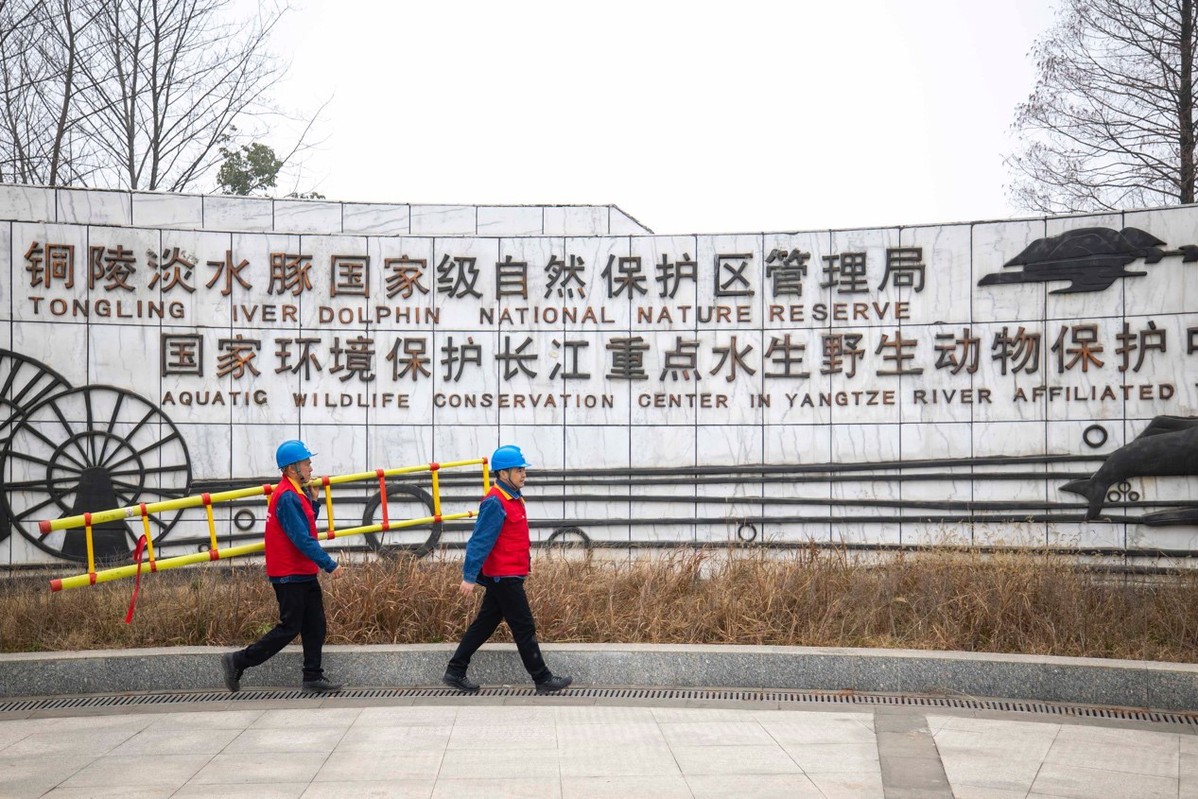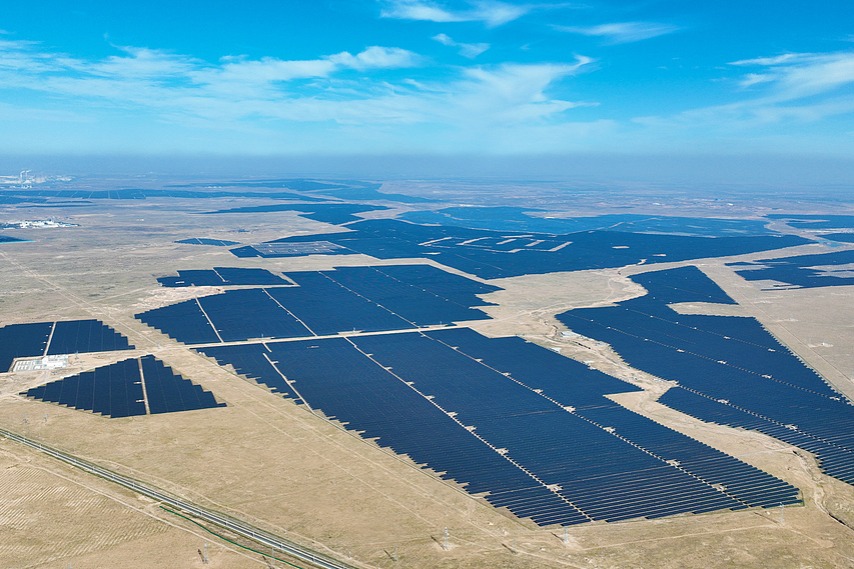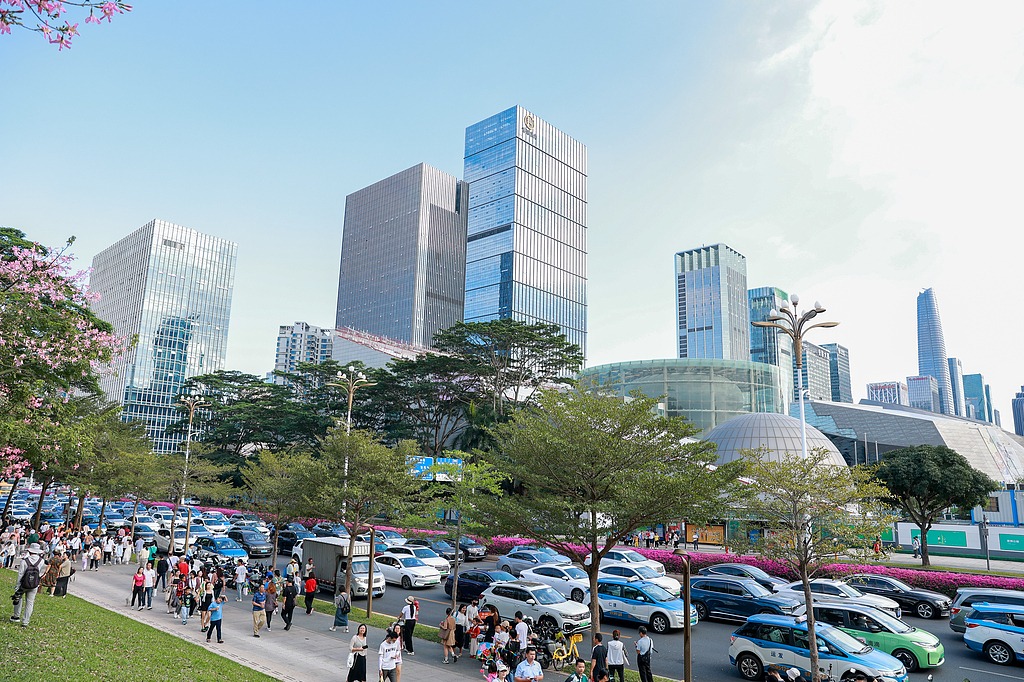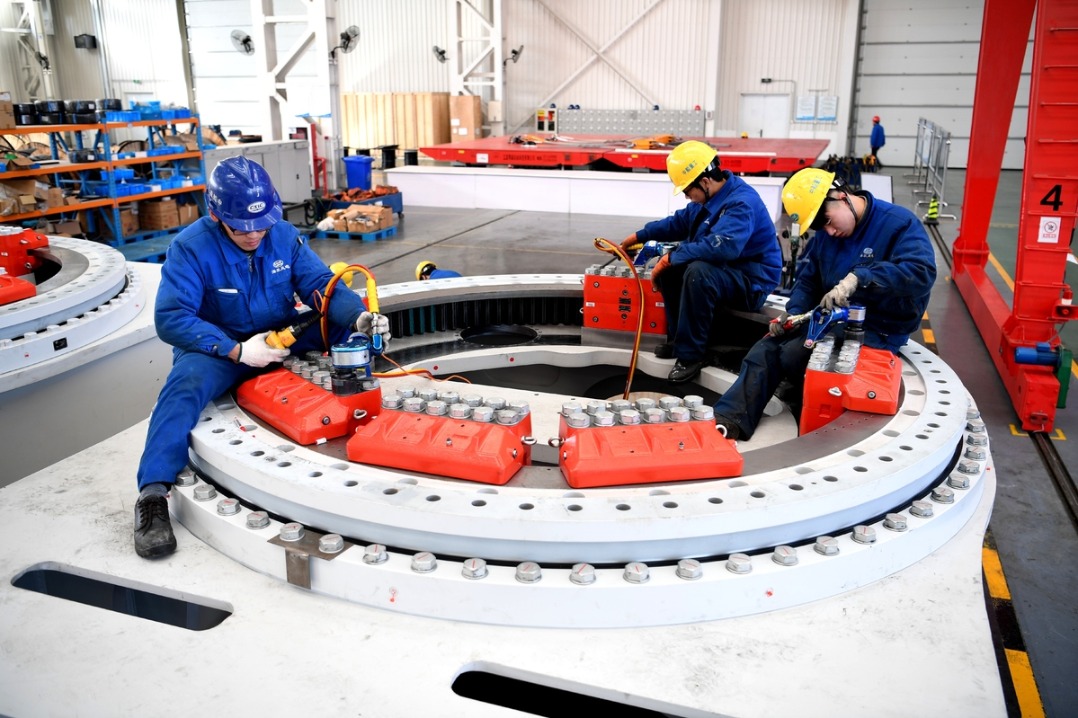Prioritizing protection of Yangtze's 'smiling angels'


As spring's warmth washes over the junction of the middle and lower reaches of the Yangtze River in Tongling, Anhui province, it's no longer rare to see endangered Yangtze finless porpoises leaping out of the water — thanks to the efforts of State Grid Tongling Power Supply Company.
The finless porpoise, a national first-class key protected animal, is a unique freshwater cetacean that used to widely inhabit the middle and lower reaches of the river. With its rounded head and upturned mouth resembling a smile, it is affectionately dubbed "the smiling spirit of the Yangtze" and "smiling angel".
China has attached great importance to the conservation of the species, and since the 1980s has explored three major strategies: in-situ conservation, translocation conservation and artificial breeding. Translocation conservation, which involves establishing translocated conservation areas in bodies of water with ecological environments similar to the Yangtze, has proven to be the most effective measure.
The Tongling River Dolphin National Nature Reserve, located in Datong Ancient Town in Tongling, is the world's first site to use semi-natural conditions for the translocation and conservation of wild animals such as the Chinese river dolphin and the Yangtze finless porpoise. The reserve stretches from Laozhou region in Zongyang county, Tongling city, to Jinniudu region in Tongling, spanning 58 kilometers and a total area of 31,518 hectares.
Zhang Bajin, a native of Tongling, grew up by the Yangtze River and spent the first half of his life as a boatman. He is now a caregiver who feeds the Yangtze finless porpoises four times a day, every day, with about 10 kilograms of bait each time — a devotion that's earned him the nickname the "Yangtze finless porpoise Dad".
"This is my persistence and my duty," Zhang said. His close observation allows for a better understanding of the porpoises' physical condition and their surrounding environment, enabling him to take timely measures. For instance, if he notices a porpoise with diarrhea, he will promptly give medication to regulate its digestive system and add vitamins and saline to the bait to provide additional nutrition. Yangtze finless porpoises are sensitive to temperature, and thrive in water temperatures ranging from 10 to 28 degrees Celsius.
State Grid Tongling Power Supply Company has proposed an electrical transformation plan to improve the water quality in the Yangtze finless porpoise conservation area. This involves installing specialized transformers and lines alongside the reserve's power lines, extending power supply services to the last mile. The transformers can be used to dynamically regulate the water level in the conservation area. By driving electric water pumps, they regularly extract river water to address issues such as poor water circulation, low water levels and declining water quality within the reserve. In accordance with seasonal changes, they can also adjust the water temperature in the porpoises' living area to provide a favorable living environment.
On March 15, the Tongling Yangtze Finless Porpoise Protection Association captured footage of a pregnant porpoise hunting in the river segment nearby the Tongling Yangtze River Bridge. The agile movements of the expectant mother were captured in the video. As of now, more than 50 wild porpoises have been continuously monitored in the Tongling section of the Yangtze River.
On March 20, the Party member service team of State Grid Tongling Power Supply Company entered the conservation area to conduct an inspection of power lines to ensure a safe and stable electricity supply. To protect and restore the ecological environment of the Yangtze River, a strict 10-year fishing ban in key water areas of the basin was put in place on Jan 1, 2021. "Good ecology brings good days," said Wang Yinlong, head of the construction department of State Grid Tongling Power Supply Company. "This is not only for the protection of the Yangtze finless porpoises, but for our own life."
Over the past decade, State Grid Tongling Power Supply Company has actively contributed to the ecological restoration of the Yangtze River basin, assisting in the transformation of eco-friendly development. The company has shouldered social responsibilities by fully integrating orders and resources from local governments, forestry departments, communication operators, local villagers and social media.
In 2017, State Grid Tongling Power Supply Company completed Anhui's first port shore power demonstration project at Dongyuan Wharf. In 2019, Tongling achieved full coverage of shore power at 23 riverside ports with the construction of 65 sets of shore power facilities, which now provide power to an average of 5,000 vessels annually.
The use of port shore power plays a crucial role in improving the environmental quality of the conservation area and the entire Yangtze River basin. In 2023, electricity consumption from Tongling port shore power reached 197,291 kilowatt-hours, which is equivalent to a reduction in fuel consumption of about 110 metric tons and a reduction in carbon dioxide emissions of about 345.9 tons. Additionally, dust and noise pollution caused by vessels have also been significantly reduced.
State Grid Tongling Power Supply Company is committed to the construction of a green and environmentally friendly environment and will continue to implement the guidance of national and Anhui province's ecological environmental protection plan to reduce pollution and carbon emissions while expanding greenery and contributing to ecological restoration.




































